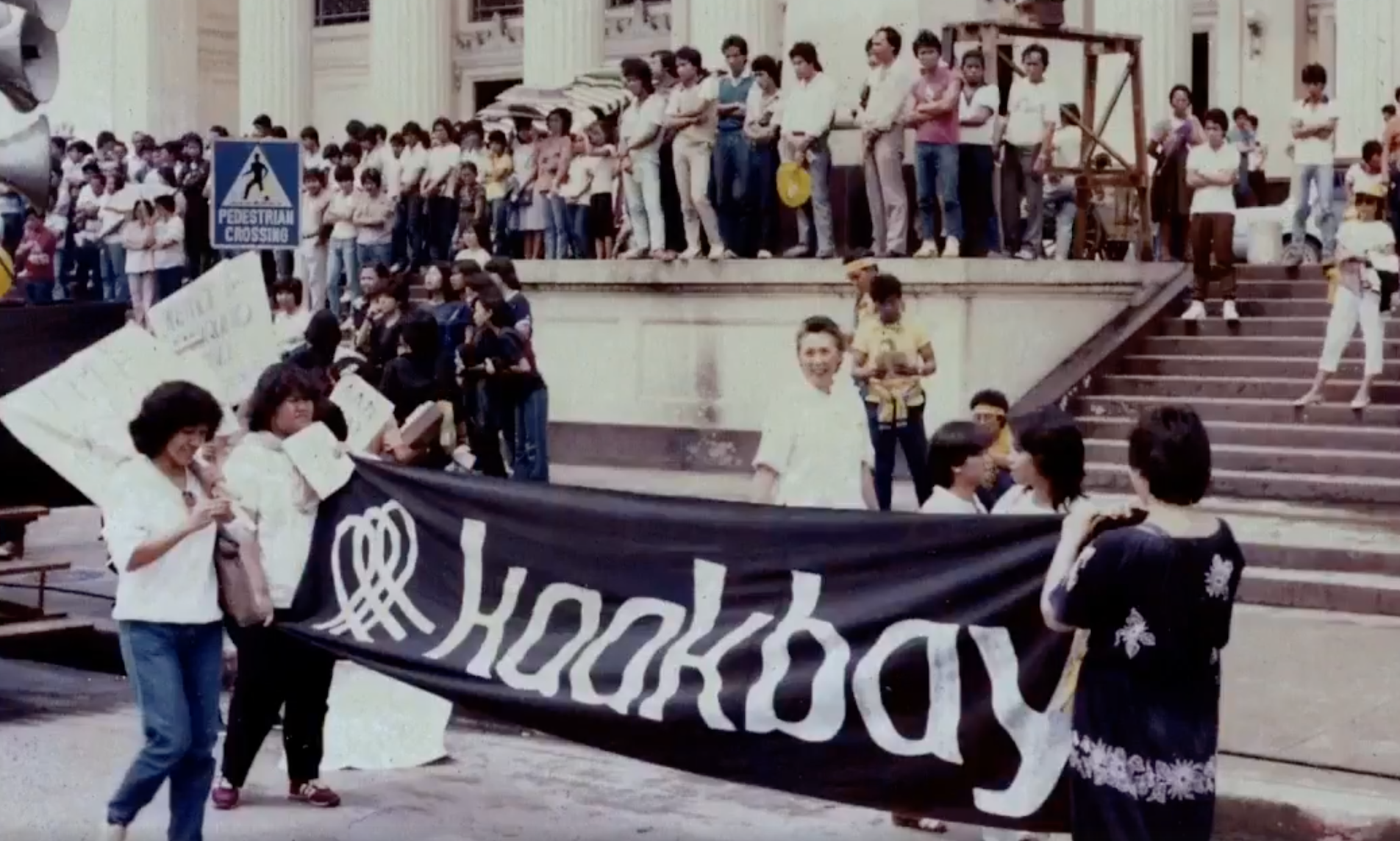|
Philippine National Police
The Philippine National Police ( fil, Pambansang Pulisya ng Pilipinas, acronymed as PNP) is the armed national police force in the Philippines. Its national headquarters is located at Camp Crame in Bagong Lipunan ng Crame, Quezon City. Currently, it has approximately 220,000 personnel to police a population in excess of 100 million. The agency is administered and controlled by the National Police Commission and is part of the Department of the Interior and Local Government (DILG). Local police officers are operationally controlled by municipal mayors. DILG, on the other hand, organizes, trains and equips the PNP for the performance of police functions as a police force that is national in scope and civilian in character. The PNP was formed on January 29, 1991, when the Philippine Constabulary and the Integrated National Police were merged pursuant to Republic Act 6975 of 1990. [...More Info...] [...Related Items...] OR: [Wikipedia] [Google] [Baidu] |
Philippine Constabulary
The Philippine Constabulary (PC; tl, Hukbóng Pamayapà ng Pilipinas, ''HPP''; es, Policía de Filipinas, ''PF'') was a gendarmerie-type police force of the Philippines from 1901 to 1991, and the predecessor to the Philippine National Police. It was created by the American colonial government to replace the Spanish colonial Guardia Civil, happened on the 19th century history of the Philippines. It was the first of the four branches of the Armed Forces of the Philippines. On January 29, 1991, it was merged with the Integrated National Police to form the Philippine National Police. History The Philippine Constabulary (PC) was established on August 18, 1901, under the general supervision of the civil Governor-General of the Philippines, by the authority of Act. No. 175 of the Second Philippine Commission, to maintain peace, law, and order in the various provinces of the Philippine Islands. By the end of 1901, a total of 180 officers had been commissioned.. The consta ... [...More Info...] [...Related Items...] OR: [Wikipedia] [Google] [Baidu] |
Armed Forces Of The Philippines
The Armed Forces of the Philippines (AFP) ( fil, Sandatahang Lakas ng Pilipinas) are the military forces of the Philippines. It consists of three main service branches; the Army, the Air Force, and the Navy (including the Marine Corps). The President of the Philippines is the Commander-in-Chief of the AFP and forms military policy with the Department of National Defense, an executive department acting as the principal organ by which military policy is carried out, while the Chief of Staff of the Armed Forces of the Philippines serves as the overall commander and the highest-ranking officer in the AFP. Founded under the National Defense Act of 1935, while tracing its roots to the Philippine Revolutionary Army, the AFP has played an integral part in the country's history. The AFP has also been involved in various conflicts, such as combatting rebellion against the Communist Party of the Philippines (CPP) and it's attached organizations, the New People's Army (NPA) and the Nati ... [...More Info...] [...Related Items...] OR: [Wikipedia] [Google] [Baidu] |
Internal Affairs Service Of Philippine National Police
The Internal Affairs Service (IAS) of the Philippine National Police (PNP) which investigates infractions allegedly committed by the members of the PNP. It was created pursuant to ''Republic Act (RA) 8551'' otherwise known as "The PNP Reform and Reorganization Act of 1998", and is tasked to instill police discipline, enhance the delivery of police service and dispense justice. Proposed independence As conceived in RA 8551, the IAS is part of the PNP - an institutional setup which has led to proposals for the IAS to be made an independent unit, since all of the unit's actions are subject to review by, and are sometimes reversed by PNP commanders. The institutional arrangement also made it difficult for the investigate any allegations which may be directed towards top PNP commanders, who are the ones who approve the investigations. As a result, in 2019, it was proposed that the agency be removed from the administration of the PNP and made an attached agency of the Philippines' Depa ... [...More Info...] [...Related Items...] OR: [Wikipedia] [Google] [Baidu] |
Republic Act No
A republic () is a "state in which power rests with the people or their representatives; specifically a state without a monarchy" and also a "government, or system of government, of such a state." Previously, especially in the 17th and 18th centuries, the term was used to imply a state with a democratic or representative constitution (constitutional republic), but more recently it has also been used of autocratic or dictatorial states not ruled by a monarch. It is now chiefly used to denote any non-monarchical state headed by an elected or appointed president. , 159 of the world's 206 sovereign states use the word "republic" as part of their official names. Not all of these are republics in the sense of having elected governments, nor is the word "republic" used in the names of all states with elected governments. The word ''republic'' comes from the Latin term ''res publica'', which literally means "public thing", "public matter", or "public affair" and was used to refer t ... [...More Info...] [...Related Items...] OR: [Wikipedia] [Google] [Baidu] |
Department Of National Defense (Philippines)
The Department of National Defense (DND; fil, Kagawaran ng Tanggulang Pambansa, ''KTP'') is the executive department of the Philippine government responsible for guarding against external and internal threats to peace and security in the country. The Department of National Defense exercises executive supervision over the Armed Forces of the Philippines (AFP), the Office of Civil Defense (OCD), the Philippine Veterans Affairs Office (PVAO), the National Defense College of the Philippines (NDCP), the Government Arsenal (GA), and Veterans Memorial Medical Center (VMMC). It is also responsible for disaster preparation and management in the country. It is headed by the Secretary of National Defense, who is a member of the President's cabinet. The current OIC of the National Defense of the Philippines is Jose Faustino Jr. as of June 30, 2022. History The Department of National Defense or DND was formally organised on November 1, 1939, pursuant to ''Executive Order No. 230'' of P ... [...More Info...] [...Related Items...] OR: [Wikipedia] [Google] [Baidu] |
Davide Commission
Davide is an Italian given name (common) and an Italian/Filipino surname (relatively rare), and may refer to: Given name * Davide Alviti (born 1996), Italian basketball player * Davide Ancilotto (1974–1997), Italian basketball player * Davide Astori (1987-2018), Italian footballer * Davide Biale (born 1994), Italian Bass Slapper * Davide Dias (born 1983), a Portuguese footballer * Davide Faraone (born 1975), Italian politician * Davide Faraoni (born 1991), Italian footballer * Davide Lorenzini (born 1969), Italian diver * Davide Nicola (born 1973), former Italian footballer and manager * Davide Sanguinetti (born 1972), Italian former tennis player * Davide Valsecchi (born 1987), Italian racing driver * Davide Santon (born 1991) Italian footballer Surname *Hilario Davide Jr. (born 1935), Philippine chief justice *Hilario Davide III (born 1964), Filipino politician See also *David (other) David was the second king of the United Kingdom of Israel and a figure in the scri ... [...More Info...] [...Related Items...] OR: [Wikipedia] [Google] [Baidu] |
Metrocom Intelligence And Security Group
The Metrocom Intelligence and Security Group (MISG) was the branch of the Philippine Constabulary's Metropolitan Command under the administration of President Ferdinand Marcos Ferdinand Emmanuel Edralin Marcos Sr. ( , , ; September 11, 1917 – September 28, 1989) was a Filipino politician, lawyer, dictator, and kleptocrat who was the 10th president of the Philippines from 1965 to 1986. He ruled under martial .... It was responsible for maintaining peace and order though its unit tasked with going after insurgents was linked to human rights violations at the time. It was headed by Rolando Abadilla. References Presidency of Ferdinand Marcos Secret police {{SEAsia-hist-stub ... [...More Info...] [...Related Items...] OR: [Wikipedia] [Google] [Baidu] |
Human Rights Abuses During The Presidency Of Ferdinand Marcos
The dictatorship of Philippine President Ferdinand E. Marcos in the 1970s and 1980s is historically remembered for its record of human rights abuses, particularly targeting political opponents, student activists, journalists, religious workers, farmers, and others who fought against the Marcos dictatorship. Based on the documentation of Amnesty International, Task Force Detainees of the Philippines, and similar human rights monitoring entities, historians believe that the Marcos dictatorship was marked by 3,257 known extrajudicial killings, 35,000 documented tortures, 77 'disappeared', and 70,000 incarcerations. Some 2,520 of the 3,257 murder victims were tortured and mutilated before their bodies were dumped in various places for the public to discover - a tactic meant to sow fear among the public, which came to be known as "salvaging." Some victims were even subjected to cannibalism. Military units involved Although various human rights abuses were attributed units throughou ... [...More Info...] [...Related Items...] OR: [Wikipedia] [Google] [Baidu] |
Ateneo De Manila University
, mottoeng = Light in the Lord , type = Private, research, non-profit, coeducational basic and higher education institution , established = December 10, 1859 , religious_affiliation = Roman Catholic (Jesuits) , academic_affiliations = ACUCA AJCU-AP AUN PAASCU IAJU , endowment = , chairman = Bernadine T. Siy , head_label = President , head = Fr. Roberto C. Yap, SJ , faculty = approx. 2,470 , administrative_staff = 3,015 , students = 15,269 (university level) , undergrad = 8,614 , postgrad = 6,655 , doctoral = , other = approx. 6,500 (grade school and high school) , city = , location = Loyola Heights, Quezon City, Metro Manila, Philippines * Grade School * Junior High School * Senior High School * Loyola Schools * School of Government Salcedo Village, Makati, Metro Manila, Philippines Rockwell Center, Makati, Metro Manila, Philippines * School of Law * Graduate School of Business ... [...More Info...] [...Related Items...] OR: [Wikipedia] [Google] [Baidu] |
People Power Revolution
The People Power Revolution, also known as the EDSA Revolution or the February Revolution, was a series of popular Demonstration (people), demonstrations in the Philippines, mostly in Metro Manila, from February 22 to 25, 1986. There was a sustained campaign of civil resistance against regime violence and electoral fraud. The nonviolent revolution led to the departure of Ferdinand Marcos, the end of his 20-year dictatorship and the restoration of democracy in the Philippines. It is also referred to as the Yellow Revolution due to the presence of yellow ribbons during demonstrations (in reference to the Tony Orlando and Dawn song "Tie a Yellow Ribbon Round the Ole Oak Tree") as a symbol of protest following the Assassination of Benigno Aquino Jr., assassination of Filipino senator Benigno "Ninoy" Aquino, Jr. in August 1983 upon his return to the Philippines from exile. It was widely seen as a victory of the people against two decades of presidential rule by President Marcos, ... [...More Info...] [...Related Items...] OR: [Wikipedia] [Google] [Baidu] |

.png)

.png)
